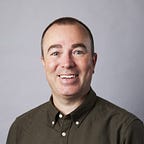Baking bread for a sustainable future
It’s raining lightly in Oslo as our procession makes its way past the gleaming white of the Opera House, jutting like a glacier over Oslo Fjord. I am following an artist, Eva Bakkeslett, on a strange journey to a kind of guerilla bakehouse. Colleagues from around the world are stretched out behind me in a chattering, happy chain. None of us are entirely sure where we are going — in fact, I’m starting to think we might be lost.
We are winding our way through what appears to be a construction site in the Oslo docklands. We pass some locals fishing in the fjord, but there is no sign of our destination. Then, suddenly, we round a bend and a strange structure is revealed. It is Bakehouse Bjørvika, a public baking facility housed within an experimental architectural structure in Bjørvika. It is the home of the Flatbread Society. Our visit is part of the integrated art program at the excellent Transformation in a Changing Climate Conference.
I was brought up in Arctic Norway where baking bread is still common in many homes. My grandmother, mother and father baked bread, often in batches of six, so it would last for a week. When I moved to England to study art I brought my bread baking traditions with me. The white substance you could buy in shops bore no resemblance to what I would define as bread, nor did it contain any of its qualities. I simply had to bake my own. As my life and art amalgamated, my baking also became part of my arts practice. I wanted to share the poetry and art of bread baking as aesthetic pleasure and as an entry to our lost connections with nature and our senses — Eva Bakkeslet.
We arrive and gladly take shelter from the rain, huddling around a rustic, wood-fired oven. It’s a tight space and it feels a bit awkward with so many of us crammed in. The resident artists tell us stories about the project and invite us to try our hand at baking flatbread. Adjacent to the bakehouse is a plot of land where they have grown their own grain to make flour for the bread. Big balls of dough are ready for us to knead into shape. We set to work making flat bits of dough in diverse shapes, which get shovelled into the oven.
The group starts to loosen up as we knead and roll and start to eat together. There is something a bit magical about this process of creating and eating bread together, especially with grains grown right on the spot. It’s the most local and sustainable of experiences — low-impact, collaborative and a whole lot of fun!
The bread tastes wonderful, especially dipped in olive oil with a bit of salt. One of the artists — Amy Franceschini — tells us a wonderful story about a family that moved to a terribly harsh landscape and grew rye to support themselves. After a particularly tough winter, which not all of them survived, they emerged in the spring to see only a single rye stalk remained. They stood watch over the rye stalk as it grew and protected it from predation. From that one plant, they re-established a crop and became resilient to survive future winters. And then, with a flourish, she produced a small jar and said, “these are grains from that rye crop”. She gave us each a couple of grains to take with us — I call them my resilience seeds. They are a symbol of human resilience and our ability to overcome the toughest obstacles.
I carry the seeds away with me, but also something else. A sense of camaraderie with the rest of the conference participants. An insight into human resilience. A recognition of the power that performing simple rituals together has to transform groups of people into communities. And a powerful desire to build my own wood-fired oven!
Such is the power of art — it delivers unexpected insights and it continues to work on you after the fact. Sustainability movements needs more art like this.
